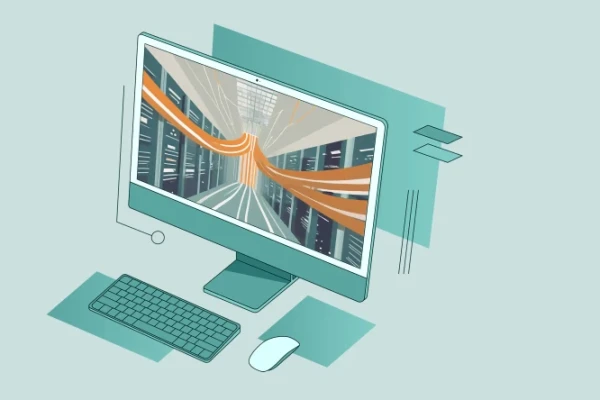SAP S/4HANA 2020 - Innovation, Automation, Intelligence (Part 1)
With the 2020 release of SAP S/4HANA, the Walldorf-based company has once again introduced many new features and improvements to the system under the motto “It’s all about innovation, automation and intelligence”. In this blog series, we will present some of the highlights, divided into the respective business areas.
In the first part of our series, we will highlight the topics of Manufacturing, Finance and Sales/Marketing and Extended Warehouse Management. In a later article, we will look at the new features from the areas of Procurement and R&D as well as Service and Asset Management.
Manufacturing
Project management with the new Kanban board
The new graphical Kanban board offers intuitive monitoring of lean manufacturing. It provides a detailed overview of Kanban control cycles and containers circulating between the source and the sink.
Material requirements planning with Predictive MRP
For improved simulation, Predictive MRP has been enhanced with new KPIs and now also shows materials with invalid source and violated constraints. Material restrictions can be defined with a new dedicated app. In addition, it is now possible to create PIRs (for demand-driven components and/or top-level materials) during the release of a simulation.
Better apps for easier material planning
Several apps have been improved in the 2020 release, for example, the “Schedule pMRP Simulation Creation” app now includes a new job template for creating simulation data using material component data. Another app, “Process pMRP Simulations”, prepares a range of simulation views such as demand plan and capacity plan simulation and now includes multi-level material simulation.
In addition, the new problem list now contains a prioritized list that can be used to solve the most important problems first.
Finance
Universal allocation
By harmonizing the modeling and execution of allocations within SAP S/4HANA, universal allocation ensures transparency of allocation logic and traceability of allocation execution.
House bank processes
Processes for managing bank relationships have also been simplified. By using the same master records as bank reconciliation accounts and clearing accounts for mapping house bank processes, the number of G/L accounts required for your payment transactions is significantly reduced. It also offers the advantage of simpler maintenance of the chart of accounts.
Corporate Closing
In the Corporate Closing area, several group currencies can be generated in a single closing process for accounting purposes. This increases efficiency and automation when working with multiple group currencies or multiple currency conversions, e.g. for conversion at constant exchange rates for comparative reports.
Sales and marketing
Intelligent product and quantity suggestions
This function offers product and quantity recommendations based on historical data, whereby both (positive) product lists and exclusion lists can be taken into account for the product suggestions. In addition, the intelligent product suggestion can be used to predict whether the quantity of products ordered will increase or decrease.
The algorithm for calculating the quantity has been improved compared to the previous dynamic product suggestion by including an additional trend factor in the calculation. The scientific term for this method is “double exponential smoothing”.
Preliminary billing document / Vorläufiger Rechnungsbeleg / Preliminary billing document
SAP S/4HANA now provides the preliminary billing document, which is an optional intermediate document between the invoiced reference document (e.g. a direct debit request) and the final billing document (usually the invoice). It is structurally identical to a standard billing document and is relevant for issuing, but not for posting in financial accounting. The provisional invoice document can be changed as often as necessary after discussions with the customer and then converted into a final invoice once both parties have reached an agreement.
The provisional invoice document is not the same as the pro forma invoice: The pro forma invoice is a printout of a customer invoice on which the importer or the competent authorities of the importing country or region provide information on upcoming shipments. It serves different business requirements.
Flexible numbering of billing documents
With the SAP S/4HANA 2020 version, the BAdI (SD_BIL_FLEX_NUMBERING) can be used to assign newly created billing documents of a specific billing document category to specific internal number range intervals and optionally to number range prefixes.
Customer overview - Dashboard
The new overview collects all important sales KPIs for a specific customer and provides the salesperson with quick insights into sales trends. In addition, you can drill down into related apps to take action.
The predefined order-to-cash dashboard is located in the SAP Analytics Cloud and analyzes SAP S/4HANA data such as sales volume, profit margin and incoming orders. This dashboard can be used as a template and expanded to include the additional data analysis requirements. For on-premise SAP S/4HANA customers, the connection between SAP S/4HANA and SAP Analytics Cloud must be established. The dashboard itself can be embedded in the SAP S/4HANA Fiori Launchpad for a harmonized user experience.
Extended Warehouse Management (EWM)
In the EWM area, the analysis functions have been extended to improve warehouse monitoring. It is crucial for manufacturing companies to have the right data on incoming and outgoing goods in order to adjust priorities in good time. The new features include new CDS (Core Data Services) views and improved navigation to identify and prevent potential bottlenecks at an early stage.
In addition, thanks to the newly integrated just-in-time delivery to production, stock levels can be further reduced, which should result in cost savings for every company.
Learn more

What changes and innovations can customers expect when switching to the new SAP S/4HANA 2023 release? A brief insight into the new release strategy and highlights of the new release at application level.

Find out how to successfully plan and implement your SAP S/4HANA conversion pre-project.

With the Greenfield sup> transformation approach, SPIRIT/21 has developed a process model especially for companies that want to convert their SAP environment to SAP S/4HANA in a simple, time- and effort-optimized manner.
Markus Wühr
Senior Consultant
Phone: +49 173 301 2293
E-Mail: mwuehr@spirit21.com
As a senior project manager, Markus was responsible for the SAP S/4HANA implementation at odelo GmbH, among other things.

